How To Find Percentage Relative Frequency
Therefore to get the relative frequency we divide each frequency by 35. Then take this number times 100 resulting in 40.
Notice that the sum of the relative frequencies is always equal to 1.

How to find percentage relative frequency. For example there were 20 items sold in the price range of 1 10. For example the decimal result of 013 is equal to 13. The sum of the relative frequency is 1.
The reason we add by column is because we are told to fill in the column relative frequencies. For example the relative frequencies for the SUV column will be. The percentage of a category is found by multiplying the relative frequency of that category by 100.
Multiply every relative frequency by 100 100 to get the percentage frequency. For example if you had 10 total values you would type C110 to figure the frequency percentage. For example you calculate the relative frequency of prices between 350 and 374 as 620 to get 030 30 percent.
Below is a frequency distribution table representing number of students absent in every grade. In total there were 66 items sold. With a sample size of 20 gas stations the relative frequency of each class equals the actual number of gas stations divided by 20.
To calculate the percentage of males in Table 3 take the frequency for males 80 divided by the total number in the sample 200. Because all the previous frequencies are already added to the previous total. A short video explaining how to calculate the percentage cumulative frequency and grab this information from a set of data.
So we divide each column by the column total. The result is then expressed as either a fraction or a percentage. The sum of the relative frequency column is or 1.
Relative Frequency rf or percentage distribution make it much easier to compare two sets of data Frequency Distribution Table A graph of touching rectangles. To find the relative frequencies divide each frequency by the total number of students in the sample - in this case 20. Define a fourth column in your spreadsheet and divide the values in the third column by the total number of records in your data set.
7 9 18 12 4 50. The relative frequency of wins is 15 divided by 18 or 83 because out of the 18 total games or events your. Hence 1070 014 1270 017 2170 03 1570 021 and 1270 017.
28 28 97 022. The total frequency or the cumulative frequency in this case is 35. This is a common practice as relative frequency is often used as a predictor of the percentage of times that some value will occur.
To determine the relative frequency for each class we first add the total number of data points. The cumulative frequency of your wins is 15 because that event occurred 15 times. A relative frequency is the fraction or proportion of times an answer occurs.
Next we divide each frequency by this sum 50. About Press Copyright Contact us Creators Advertise Developers Terms Privacy Policy Safety How YouTube works Test new features Press Copyright Contact us Creators. Relative frequencies can be written as fractions percents or decimals.
Thus the relative frequency of the class 1 10 is 20 66 0303. Percentage is calculated by taking the frequency in the category divided by the total number of participants and multiplying by 100. To obtain that add all the previous relative frequencies to the current relative frequency.
The numbers in decimal points are your relative frequencies. 014 14 students with an F 018 18 students with a D. The last value is equal to the total of all the observations.
To convert a decimal number to a percentage simply shift the decimal point two spaces to the right and add a percent symbol. Percentage of Android phone 03 100 30 Relative frequency of Window phone 02 20. Thus we found the relative frequency of each class by taking the frequency of each class and dividing by the total items sold.
Divide each frequency by the total figure Pick each number in the class and divide it by the total attendance. Horizontal axis represents the class boundaries vertical axis shows the class frequencies Histogram A graph in the shape of a polygon mp lower boundary upper boundary2 Horizontal axis shows the class midpoint. Cumulative relative frequency is the accumulation of the previous relative frequencies.
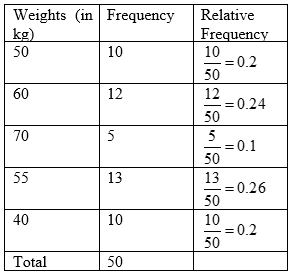 Definition Of Relative Frequency Distribution Chegg Com
Definition Of Relative Frequency Distribution Chegg Com
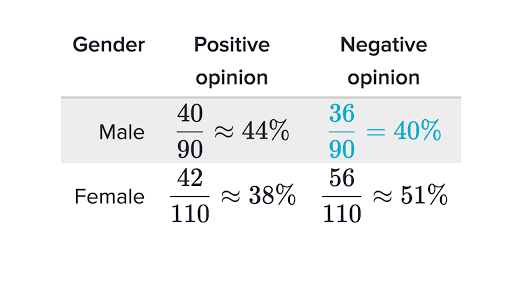
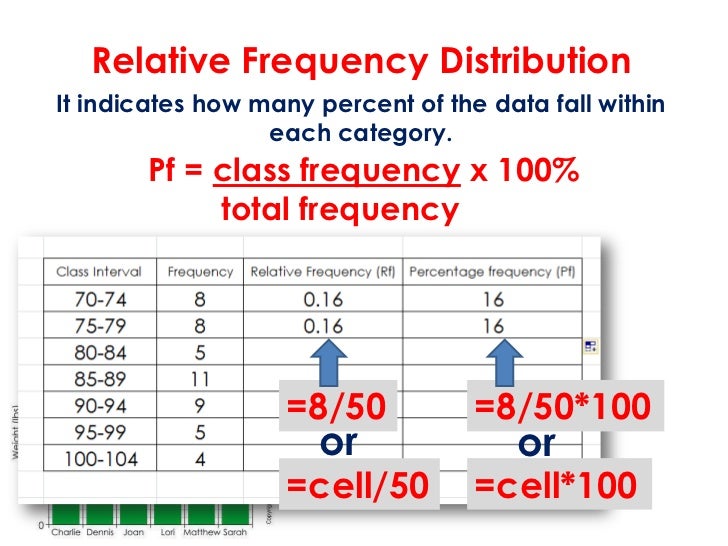 Frequency Distributions And Graphs
Frequency Distributions And Graphs
 Frequency Table Sage Research Methods
Frequency Table Sage Research Methods
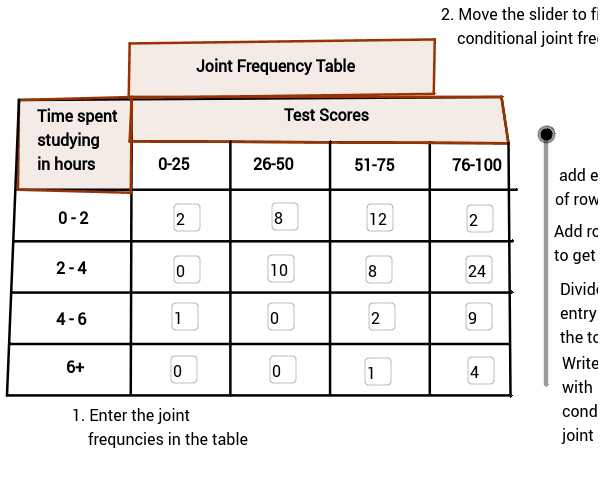 Find Conditional Relative Frequencies Geogebra
Find Conditional Relative Frequencies Geogebra
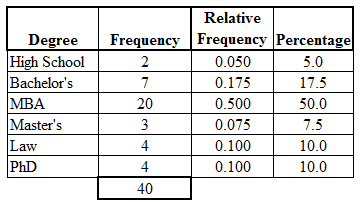 Frequency Table Categorical Data
Frequency Table Categorical Data
 Year 7 8 9 Relative Frequency How To Calculate With Frequency As A Percentage Youtube
Year 7 8 9 Relative Frequency How To Calculate With Frequency As A Percentage Youtube
 How To Calculate Relative Frequency In Excel Statology
How To Calculate Relative Frequency In Excel Statology
 Statistics How To Make A Relative Frequency Distribution Youtube
Statistics How To Make A Relative Frequency Distribution Youtube
 Statistics How To Make A Cumulative Relative Frequency Distribution Youtube
Statistics How To Make A Cumulative Relative Frequency Distribution Youtube
 Percentage Frequency Tables Youtube
Percentage Frequency Tables Youtube
 How To Find Cumulative Frequency W 11 Examples
How To Find Cumulative Frequency W 11 Examples
 Frequency Distribution Quick Introduction
Frequency Distribution Quick Introduction
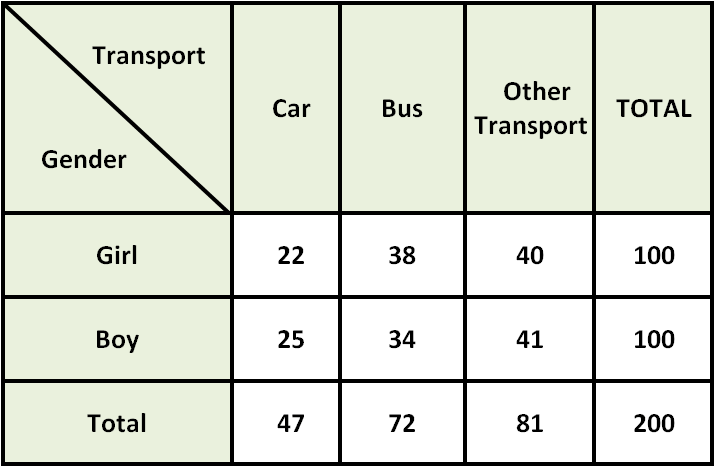 Calculate Joint Relative Frequency
Calculate Joint Relative Frequency
 Statistics Examples Histograms With Percent Frequency Histograms Youtube
Statistics Examples Histograms With Percent Frequency Histograms Youtube
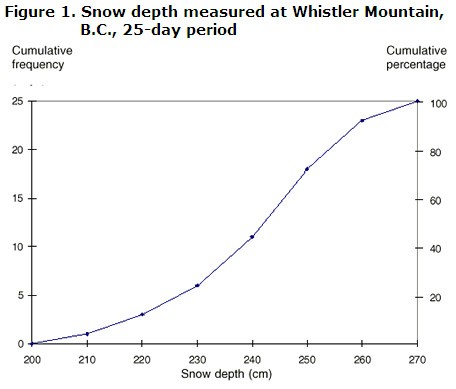 Statistics Power From Data Analytical Graphing Cumulative Percentage
Statistics Power From Data Analytical Graphing Cumulative Percentage
 Calculating Relative Frequency Youtube
Calculating Relative Frequency Youtube
 How To Make A Cumulative Relative Frequency Table Youtube
How To Make A Cumulative Relative Frequency Table Youtube


Post a Comment for "How To Find Percentage Relative Frequency"